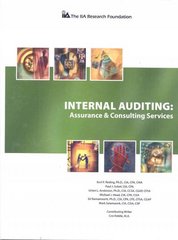
As the production planner for one of your firm's product lines, you receive sales forecasts from your firm's regional sales managers about the middle of each month. Based on these sales forecasts for the following month, you need to create production plans for each of the two products in your product line A comparison of forecasts vs. actual sales data for the past four months for two products for two channels from a new-appointed regional sales manager are shown in the table below The "indirect channel" is the retail channel and retailers typically hold some buffer inventory of their own to service varying final-customer demand requirements. The "direct channel' involves direct-to-final-customer sales via an e-commerce sales channel and associated major account initiatives. These channels do partially overlap, for those customers who view both channels as viable ways of purchasing these products Product 1 Product 2 Indirect Channel Direct ChannelIndirect Channe Direct Channel Forecast Actua ForecastActualForecast ActualForecast Actual Month 1 4,500 13,271 6.5004.519 8.50010,850 11,0003,82011,0004,684 8,00012,126 4.400 5,863 9,000 4,895 5,500 7.502 9,000 6,000 3,9002,584 4.000 3.111 3.500 4.848 6,0002,567 4,500 Month 2 Month 3 21,000 9,260 Month 4 7,00016,748 653 Month 5 16,000 12,000 Based on these data and particularly on the sales manager's month-5 forecasts shown in the table, what production volume would you schedule in month 5 for each of these two products? For each product, you must make a total sales volume forecast (the total combined sales volume for the indirect and direct channels). Your production planning goal is to have production volume exactly equal sales. Assume that it's equally bad to over- or under- forecast and over- or under-produce (i.e., it's equally costly to have excess inventory as it is to have unfilled orders), you have no on-hand inventory, and there are no significant setup costs for your regular monthly production run. As the production planner for one of your firm's product lines, you receive sales forecasts from your firm's regional sales managers about the middle of each month. Based on these sales forecasts for the following month, you need to create production plans for each of the two products in your product line A comparison of forecasts vs. actual sales data for the past four months for two products for two channels from a new-appointed regional sales manager are shown in the table below The "indirect channel" is the retail channel and retailers typically hold some buffer inventory of their own to service varying final-customer demand requirements. The "direct channel' involves direct-to-final-customer sales via an e-commerce sales channel and associated major account initiatives. These channels do partially overlap, for those customers who view both channels as viable ways of purchasing these products Product 1 Product 2 Indirect Channel Direct ChannelIndirect Channe Direct Channel Forecast Actua ForecastActualForecast ActualForecast Actual Month 1 4,500 13,271 6.5004.519 8.50010,850 11,0003,82011,0004,684 8,00012,126 4.400 5,863 9,000 4,895 5,500 7.502 9,000 6,000 3,9002,584 4.000 3.111 3.500 4.848 6,0002,567 4,500 Month 2 Month 3 21,000 9,260 Month 4 7,00016,748 653 Month 5 16,000 12,000 Based on these data and particularly on the sales manager's month-5 forecasts shown in the table, what production volume would you schedule in month 5 for each of these two products? For each product, you must make a total sales volume forecast (the total combined sales volume for the indirect and direct channels). Your production planning goal is to have production volume exactly equal sales. Assume that it's equally bad to over- or under- forecast and over- or under-produce (i.e., it's equally costly to have excess inventory as it is to have unfilled orders), you have no on-hand inventory, and there are no significant setup costs for your regular monthly production run







